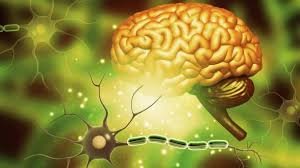What you need to know:
- Researchers from UCLA and the University of Pennsylvania have created a groundbreaking catalog of gene-isoform variations in the developing human brain.
- Supported by the Simons Foundation Autism Research Initiative, the National Institute of Mental Health, the National Science Foundation, and the UCLA Medical Scientist Training Program, this study marks a significant advancement in neurodevelopmental research and its clinical applications.
Unveiling a Vast Array of Gene Isoforms
Researchers from UCLA and the University of Pennsylvania have created a groundbreaking catalog of gene-isoform variations in the developing human brain. This unprecedented dataset offers vital insights into the molecular foundations of neurodevelopmental and psychiatric disorders, paving the way for new, targeted therapies.
Study Insights and Technological Advances
Published in Science, the study reveals how transcript expression varies by cell type and maturity. Utilizing cutting-edge third-generation long-read sequencing technologies, the researchers were able to capture complete RNA molecules. This allowed them to profile the full-length transcriptome of two critical regions of the developing neocortex: the germinal zone (containing stem cells) and the cortical plate (housing newly generated neurons). They identified 214,516 unique isoforms, over 70% of which had never been studied before.
Implications for Brain Development and Disorders
Dr. Luis de la Torre-Ubieta from UCLA and Dr. Michael Gandal from the University of Pennsylvania led the study. They highlighted that isoform regulation is crucial for understanding brain development and genetic risk for neuropsychiatric disorders. By comparing the two brain regions, they discovered that changes in isoform expression levels are significant for neurogenesis, differentiation, and cell fate.
The study found thousands of isoform switches during brain development, implicating previously uncharacterized RNA-binding proteins in cellular identity and fate decisions. This sheds light on genetic risk mechanisms for neurodevelopmental and psychiatric disorders, such as autism, by revealing the significance of rare genetic variants.
Expanding Genetic Catalogs and Therapeutic Potential
The researchers used six developing human neocortex tissue samples from the mid-gestation period (15 to 17 weeks post-conception), a critical time when the brain’s complexity begins to emerge. This enabled significant novel transcript discoveries, expanding the understanding of gene regulation during human brain development.
The findings have strong therapeutic implications. Uncovering new transcripts could lead to novel treatment approaches in gene therapy trials or targeted therapies for individuals with rare mutations associated with psychiatric or neurodevelopmental disorders. In the short term, the data can improve genetic diagnoses of neurodevelopmental disorders, helping families better understand predispositions to certain conditions.
Clinical Applications and Future Research
Dr. Gandal has shared the dataset with colleagues at the Children’s Hospital of Philadelphia to assist in diagnosing rare neurodevelopmental disorders. The resource is already helping physicians interpret neurogenetics more effectively, moving closer to developing targeted treatments and understanding genetic mechanisms with greater precision.
Supported by the Simons Foundation Autism Research Initiative, the National Institute of Mental Health, the National Science Foundation, and the UCLA Medical Scientist Training Program, this study marks a significant advancement in neurodevelopmental research and its clinical applications.

Do you have a story or an opinion to share? Email us on: info@falconposts.com Or follow the Falconposts on X Platform or WhatsApp for the latest updates.












